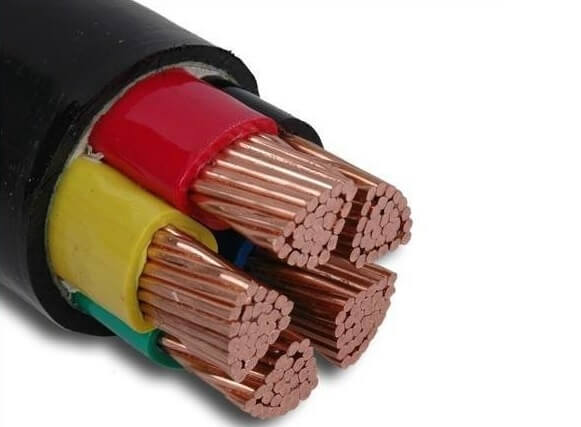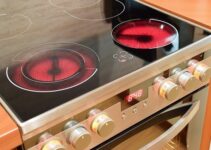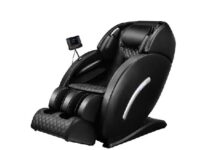Electricity is a very important part of human existence. We use electrical power for entertainment, production, preservation, medical processes, heating, cooling, and so many other things. From this fact, it is clear that the importance of electricity cannot be overemphasized.
To channel electricity properly, we need to transmit it through a medium. This medium is called “cables.” The market is filled with all kinds of electrical cables. These cables are manufactured by different brands and come in different sizes. One of these sizes is the 16 mm cable.
How much do 16 mm cables cost in Nigeria? Continue reading this post to find out the answer to this question and several others.

16 mm Cable Prices in Nigeria
Nigeria is recognized worldwide for the quality of its electrical cables. The country has several electrical cable manufacturers, some of whom have been around for the better part of three decades. These brands have gathered so much experience and are renowned for manufacturing high-quality electrical cables.
Experts will tell you that Nigerian-made cables are costlier but more efficient than their foreign counterparts. Before you begin an electrical project, you should find out the cost of the materials you need. This means that you must check out the prices of electrical cables as well. Carrying out this task can be quite difficult, especially if you are not sure which brands to look out for. We have done the homework on your behalf and put together a list of the best products on the market and their prices. Check out the list below:
- Coleman Original 16mm Single Core Pure Copper Cable -100meters: From N136,740
- Cutix 16 mm Single Core Copper Wire: From N116,000
- Nigerchin 16 mm Single Core Copper Wire: From N51,700
- Vecan 16 mm Single Core Copper Wire: From N130,000
- Cutix 16 mm Four Core Armored Cable per meter: From N5,200
- Coleman 16 mm Pure Copper Cable: From N136,740
- Dante 25 mm Four Core Armored Cable: From N5,800
PRICES LAST UPDATED: JULY 13, 2023.
The prices of these cables, like the prices of other items, are constantly changing. As such, you may notice slight variations in the market. We will keep watching for price changes and will update this post with the latest prices periodically.
Types of Electrical Cables and Their Uses
Electrical cables are among the objects that we come across every day. These items are pretty common around us even though most people can hardly define them properly. Before we look at the different types of cables, we will begin by defining electrical cables.
An electric cable is used to transmit and distribute electrical power. These cables are made up of three important components including dielectric, sheath, and conductor. The conductor helps to create a path for driving current. On the other hand, the dielectric isolates the live conductor and withstands service voltage. Finally, the sheath prevents moisture from entering the cable and protects it from any other external influence.
With this out of the way, let’s discuss the different types of electrical cables. Generally, cables are classified into five different categories depending on their purposes. Let’s check them out below:
Ribbon electric cables
This type of cable consists of several insulated wires that run parallel to each other. These different wires transmit data simultaneously. You can this type of cable to connect networking devices such as the CPU to the motherboard.
Shielded cables
This category of cables is made up of between one and two insulated wires covered by aluminium mylar foil or a woven braided shield. The covering helps to improve signal transmission. It achieves this by getting rid of any irregularities that may cause external interference or affect the frequency of power. Shielded cables help to transmit high voltage current.
Twisted pair cables
Twisted pair cables come with two or more insulated copper wires. These wires are colour-coded and intertwined. You will find this category of cables used in telephone cables. The amount of resistance the cable has to external interference is measured by the number of wires intertwined.
Coaxial cables
This class of cables is made up of a steel conductor that is plated with copper or solid copper. These components are then enclosed in a metallic tape and metallic braid. An insulated protective outer jacket is used to cover the internal components entirely. You will find coaxial cables in audio-video networking and computer networking.
Fibre optics cable
This is the final class of cables and they are used to transport optical data signals to receiving devices from an attached light source. Fiber optics cables are used for a wide variety of purposes.
Electrical Cable Measurements and Their Uses
You must have noticed that electrical cables come in different sizes. For example, this cable focused on 16 mm cable prices in Nigeria. What do these sizes stand for and what are the different sizes of cables used for? This section will provide answers to these questions.
1.5 mm Cable
This size of cable carries a very low current. We use them for thermostats, security systems, and bells.
2.5 mm Cable
This size of cable is similar to a 1.5 mm cable in the amount of current it transmits. They are mostly used for lamps.
4 mm Cable
This category of cables transmits medium current and is mostly used for lighting.
6 mm Cable
This class of cable also transmits medium current like 4 mm cables. They are used for wiring blenders and microwaves or appliances in the same class.
10 mm Cable
These cables transmit medium current, even though the current is higher than what the 4 mm and 6 mm cables transmit. They are used for dryers and refrigerators.
16 mm Cable
The cables in this class transmit a high air current. They are used for electric stoves, electric power connections, and air conditioners.
25 mm Cable
This class of cables transmits a very high current. They are used for connecting industrial equipment and central air conditioning units.





